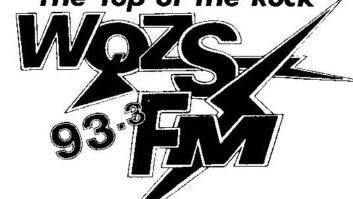Call it good fortune, coincidence or a fluke. But the fact that radio historians in 2018 can hear the rural radio voice of Isabel Baumann feels like a miracle.
FROM THE EDITOR
We continue our series of commentaries about the work of the Radio Preservation Task Force. Jennifer Hyland Wang is an adjunct professor and broadcast historian at the University of Wisconsin-Madison. She is a member of the RPTF who specializes in women’s radio programming.
— Paul McLane
Baumann (1906–2004), a Wisconsin farm wife and rural clubwoman, spoke to neighboring housewives each month on the radio program “The We Say What We Think Club” for more than 20 years. Despite the series’ longevity on Madison’s NBC affiliate WIBA, “The We Say What We Think Club” was just the kind of radio program likely to be lost — a local program broadcast from a small commercial station, a live daytime offering aimed at farm wives and a monthly substitution for the regularly-scheduled “Dane County Farm Hour.”
True to form, no audio copies of the program had been found in the 60 years since the radio show last aired. And thus, we have presumably lost the voices of five farmwomen dispensing advice and debating rural politics on “The We Say What We Think Club” during its 1937 to 1957 run.

“The We Say What We Think Club” was heard for two decades in Madison, Wis. This photo by Arthur Vinje appeared in the Wisconsin State Journal in June 1950, captioned: “WIBA radio personalities Selma (Mrs. Cornelius) Sorenson, Sibylle (Mrs. George) Mitchell, Isabel (Mrs. August) Baumann, Grace (Mrs. John) Langer and Ruth (Mrs. Howard) King, collectively known as the ‘We Say What We Think Club,’ celebrate their 13th anniversary on the air.”
Wisconsin Historical Society, WHS-40679
DAUNTING TASK
The recovery work of the Radio Preservation Task Force, a 2014 initiative of scholars and archivists charged with locating and preserving as many historic radio voices as possible, is daunting.
At the February 2016 and November 2017 conferences in Washington, scholars joined audio preservationists and radio collectors to discuss the challenges and recent finds in our search for old audio.
Like most local radio stations, Madison’s WIBA did not systematically record, transcribe or store decades of radio programming. To piece together the fabric of radio history, academics must look in unconventional places. And hope for a bit of luck.
In the case of Isabel Baumann, it took a packrat, a state-sponsored oral history project and a technological innovation to keep “The We Say What We Think Club” alive for radio researchers.
What little is known about the program was discovered accidentally when an oral historian for the Wisconsin Historical Society stumbled upon Baumann’s radio scripts while interviewing her about Midwestern farm life. These interviews were influenced by an interest in oral historiography during the mid-1970s precipitated by the availability of affordable portable tape recorders, a growing public interest in genealogy as popularized by Alex Haley’s “Roots” and anticipation of bicentennial celebrations. The society established an oral history office in 1974 headed by agricultural historian Dale Treleven as part of this trend.
Treleven sought to make oral history projects on a limited state budget sustainable. Typically, historians had collected memories on reel-to-reels or audio cassettes and carefully transcribed the interviews to produce a written document suitable for archiving. Once the transcript was complete, archivists reused the tape and recorded over previous interviews.
This process was time-consuming and expensive, and it destroyed the original audio recording. Wisconsin Historical Society audio archivists George Talbot and Stephen Masar, with Treleven’s cooperation, began testing an alternative to transcription in processing oral histories.
Adapting a system used for videotape by James Pilkington at the Vanderbilt University Television News Archive, Talbot and Masar attached an audio time track to each processed cassette tape, signaling the time at 5-second intervals. With a detailed abstract linked to the audio track, researchers could find relevant material quickly, eliminating the need for verbatim transcription.
Treleven predicted that the TAPE system (Timed Access to Pertinent Excerpts) would ensure that “thousands of dollars will be saved in processing costs, and countless aspirins and swigs of Maalox will go unconsumed by the oral history coordinator,” according to a monthly report of the oral history program in 1975.
For years, this pre-digital system did just that, saving archivists money (roughly half the cost of written transcriptions) and making state-sponsored oral history viable. More importantly, however, this technical innovation preserved the original audio recordings of these interviews, allowing them to be replayed for later researchers.
PRESERVATION INSTINCT
The Wisconsin Historical Society funded their oral history project to 1982, and Treleven interviewed approximately 150 farmers during that time for an agricultural history project.
Treleven contacted Isabel Baumann on the recommendation of another interviewee, spending eight hours in April 1980 recording her remembrances. Baumann spoke about her childhood, her time as a teacher, her experience as a rural clubwoman and her career on local radio, providing a wealth of information about the histories of Wisconsin dairy farming, women in rural politics and “The We Say What We Think Club.”
A few months after their interview, Baumann donated her papers to the Wisconsin Historical Society. This collection included pencil-marked copies of nearly every script broadcast over the 20-year life of the program. To the best of our knowledge, these are the only remaining traces of WIBA’s “The We Say What We Think Club.”
Without Baumann’s decision to preserve scripts for decades, this local program would have been forgotten. Without the development of the Wisconsin Historical Society’s oral history program in the mid-1970s and its focus on preserving the audio recordings of its participants, Isabel Baumann’s voice would have been erased from history.
The serendipity involved in preserving Baumann’s story of farmwomen speaking to other farmwomen over the airwaves for our ears nearly 70 years later is a reminder of how tentative, tenuous and important our work as radio historians really is. Particularly for radio voices that were historically marginalized, we radio researchers must expand our search for the sounds of radio’s past beyond professional audio to oral memories of radio programmers, talent, executives and engineers. How else could we possibly figure out what they thought? Or, more importantly, how they sounded?












